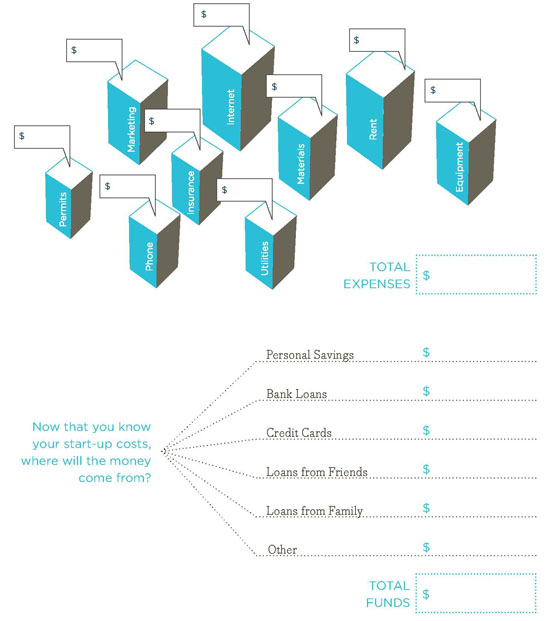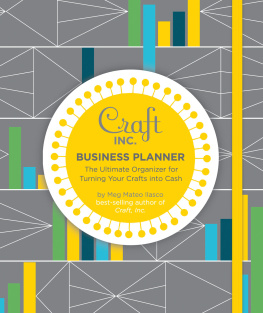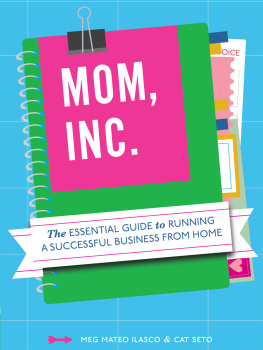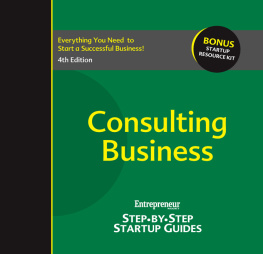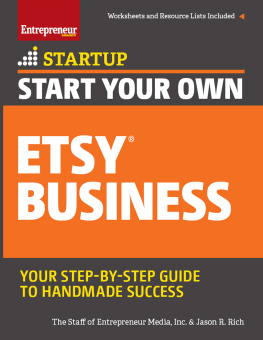
Your craft business may put your creative persona and talent at center stage, but its what happens behind the scenes, in the bank ledgers, calendars, file folders, and to-do lists, that keeps your entrepreneurial dream alive. Without proper organization and planning, that dream can easily become a nightmareyoull find yourself searching for a years worth of receipts come tax time, losing money as a result of underpricing your goods, or sitting in a quiet trade show booth due to lack of marketing. The bottom line is: if your strategy is to wing it and make decisions on the fly, sooner or later youll find yourself on the verge of a business meltdown.
Thankfully, the Craft, Inc. Business Planner is here to prevent that from happening. Starting with Business Basics, youll sharpen your number-crunching skills by projecting revenue and creating budget sheets, as well as setting big-picture goals for the coming year. The second section, Product Line, is designed to help you develop your companys signature style and weave it through your product line, packaging, and pricing. The Marketing section will help you generate campaigns and press kits to garner mentions in magazines and blogs, as well as decide on advertising outlets.
The fourth section, Wholesale Sales, brings net 30 into your lexicon in addition to providing templates for order forms and invoices. Also included is a DIY outreach plan to get into stores nationwide. The next two sections, Trade Shows and Retail Shows, each provide budget worksheets, questions to ask, booth design worksheets, packing lists, and marketing strategies to ensure show success. Fortunately, the seventh section offers extra worksheets that can be photocopied in case you need more. And finally, Contacts & Resources will help you keep track of contact information for important professionals such as your bookkeeper, vendors, and even other crafters or designers youll meet along the way. At the end, youll find handy pockets to hold receipts and important paperwork. And for additional guidance, youll get actionable advice from crafters, designers, tax professionals, publicists, editors, and buyers throughout the book.
Once you complete the planner, you will emerge with a clear understanding of your business plans and goals for the year ahead. (Of course, your plans should have some flexibility and adjust when circumstances change during the year.) With proper execution and a commitment to your goals, this planner will help get your ceramic cups to line store shelves nationwide, feature your hand-carved stamps on the page of your favorite magazine, and bring a steady stream of foot traffic to your craft fair booth. With pay dirt just around corner, lets start planning!
Jump to:
BUSINESS INFO
Make a flow-chart, as illustrated, and include:
Business Name
Business Address
Business Description
Owner Name(s)
Owner Responsibilities
Co-owner Responsibilities
Investors

OPEN-FOR-BUSINESS CHECKLIST
List, with date completed:
Business License No.,
City, State
Fictitious Name Statement No.,
County, State
Legal Structure,
File No. (if applicable)
Business Bank,
Account No.,
Address
Liability Insurance,
Account No.,
Address
Health Insurance,
Account No.,
Address

MARKET RESEARCH
Before you blindly throw your felt cozies into the marketplace, its best to scope out the competition and determine who your customers are. Doing so will give your goods a greater chance of success. Ask yourself, Does my product fill a void in the marketplace? Remember that a niche doesnt have to be totally groundbreakingit can simply introduce a new style or viewpoint. And who will buy your products? Are there enough people in that group? Remember the more specific you are about your customers, the easier it will be to create products for them.
How is your company different from the competition?
Describe your target market.
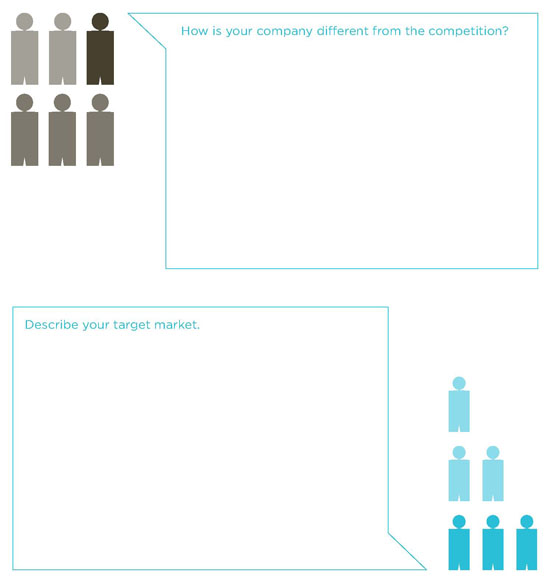
Advice from Designers + Crafters
EXPERTS ADVICE
Avoid using credit cards to start your business. When I first approached the bank about getting a small business loan, I was given a business credit card instead. I was told anything under $15,000 wasnt worth the paperwork. Once I started using it and had built up some debt, the interest rate started climbing.
Jenny Sauer
Three Sheets 2 the Wind
Its important to endure low points with a positive, solution-oriented attitude. Whether it is a slump in sales or heavy competition, everyone goes through times when their stuff isnt selling well. Ask questions: What can I do differently? How can I grow my business in a way that attracts new customers? Staying focused on a solution instead of the problem is the key to a sustainable creative business.
Lisa Congdon
Lisa Congdon Art & Illustration
If I could start my business over again I would pay much more attention to branding. As an architect, my tendency is to focus on the product. But I would have done better and set myself up for more future success if I had created a very concise and recognizable brand, graphic style, labeling system, trade show booth presence, and store display system.
Josh Jakus
Josh Jakus Design
If I could start over, I would have outsourced my printing earlier. In the beginning, everything was so exciting that I would hand-print my cards in small batches every night after my full-time job. As the orders grew, I continued to print into the wee hours, not realizing that time was money. Finally I realized that it would be a smart decision as well as a compromise because I could still hand-print some things, just not hundreds of cards at one in the morning.
Lisa Wong Jackson
Good on Paper Design
Be as professional as possible. From the e-mails you write and the forms of payment you accept to your business cards and voicemail message. Treat your buyers with respect and show maturity. Dont discount the value of any little detail.
Mollie Green
La Familia Green
START-UP EXPENSES
Theres no doubt that a good amount of seed money is always a benefit to any business. But sometimes having too much money creates more problems than having too little, because it can lead to bad decisions and a false sense of financial security. Thankfully, many craft businesses require very little start-up capital. Its usually not essential to hire employees right away or to purchase a lot of equipment, and you can work from home to keep the overhead low. Referencing the graph, estimate your expenses for launching your products and getting your business off the ground:
TOTAL EXPENSES
$ Marketing
$ Internet
$ Materials
$ Rent
$ Equipment
$ Permits
$ Insurance
$ Phone
$ Utilities
